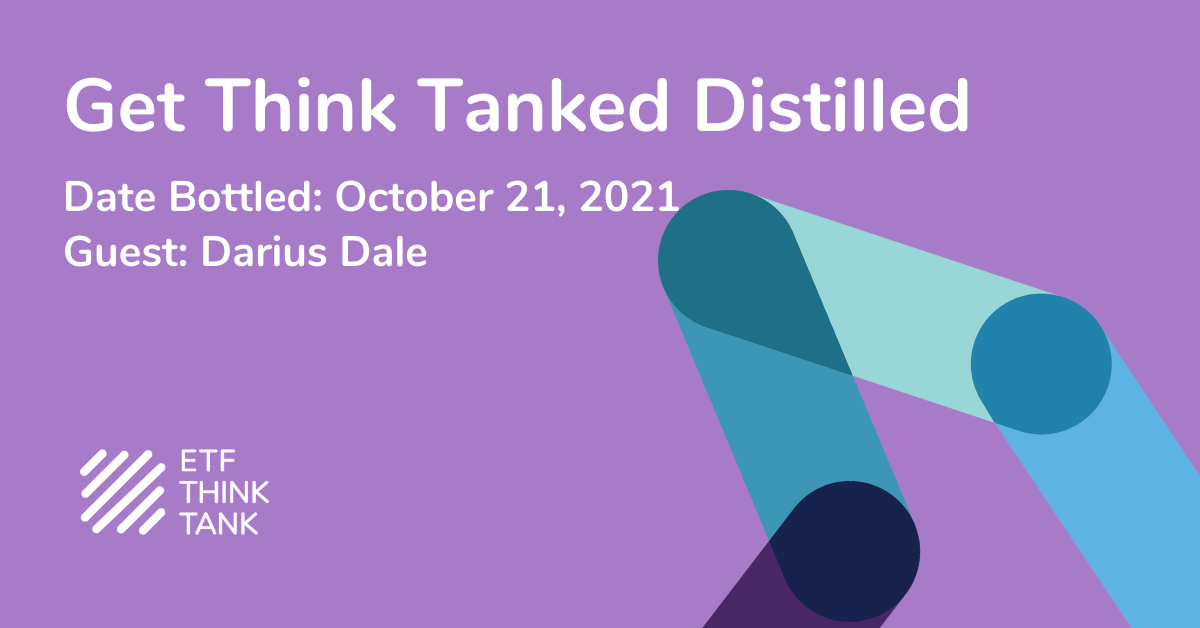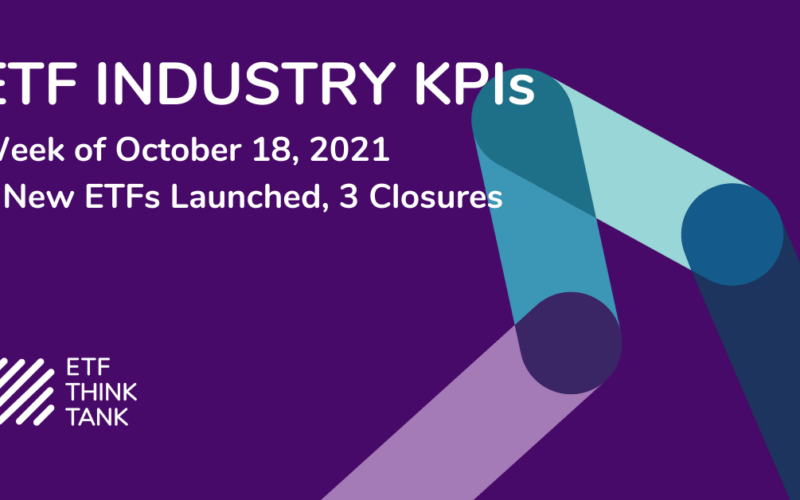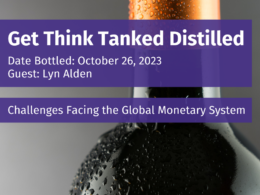Darius Dale, the founder and CEO of 42 Macro, an online financial media company specializing in macro risk management through the dual lenses of asset allocation and portfolio construction, stopped by the ETF Think Tank recently to offer his views on the state of the economy and what he sees as some of the key macroeconomic impulses that could affect the financial markets right now.
In terms of his procedure, Dale says his process includes a very systematic approach. He focuses on understanding market internals and the catalysts that are changing them. While every market environment is unique and may not be directly comparable to similar ones over the course of history, Dale looks at rates of change because those are still relative. The stagflation regime of the 1970s may not be the same as the one we could be headed towards now but comparing economic rates of change could provide the signal that such a regime is coming.
When asked about why we have seen such a concentrated bull market in just a few mega-cap names, Dale isn’t all that surprised. He notes that cash flows into equities, likely assisted by stimulus cash, is certainly helping, but it’s actually typical to see this type of trend in a decelerating growth environment. Investors often shy away from high beta products and stick to more established names. He notes that growth peaked earlier this year and has been slowing since. The delta variant also catalyzed a sharper slowdown than what was expected and that probably helped mega-caps lead.
Since late spring, equities and Treasuries have been positively correlated with each other and Dale feels that cheap capital could be the driver of some of this behavior. He says the lower that interest rates go, the easier it is for established businesses to build and grow by using cheaper and cheaper capital. Many have the capability to sell products as loss leaders in order to build their businesses, something that smaller companies may not be able to effectively match. We have to be careful about this, though, because that turns out to be deflationary over time.
Speaking of deflation, Dale sees an opportunity for gold heading into 2022. One of the big questions is how gold succeeds in a world dominated by Bitcoin and other cryptocurrencies. He explains that it’s not about market timing, it’s about asset class timing. He thinks gold is going to have its day when reflation stops and that could start to happen next year. He feels many economies could begin to move towards deflation starting in Q1 2022 and that could be gold’s opportunity. You want to be holding traditional defensive assets heading into deflation. Gold can be a hedge against negative real interest rates, but it can do particularly well when there are negative real rates in a deflationary environment.
How does Dale’s team manage risk within portfolios? He says it’s all about style, not sector positioning. In down markets, sector leadership doesn’t necessarily matter because all sectors are likely falling. Style investing, however, can produce alpha, in particular with low volatility and quality dividend stocks. He notes that there are a lot of misnomers about short selling, but that’s usually just a decay on returns because markets rise more often than not. Cash is the easiest downside protection, but he thinks the best tool is proper asset allocation. His team had a negative view of the cycle in 2019 but didn’t make any changes to their allocations. Treasuries were able to do well and you’re able to generate gains as long as you have the proper allocations.
Is Dale worried about how the markets might be affected by the massive wealth transfer that will take place over the next decade? Not as much as others might be. While we need to be mindful of what the behavioral aspect is going to be with receiving this new wealth, it’s important to remember that it will be mostly handed off to 45–50-year-olds, not just 20-somethings. There will still be a preference to move this money primarily into some combination of stocks and bonds. Advisors shouldn’t necessarily worry that all of this money is going to go from fixed income into cryptocurrency.
This week our guest will be Lindsey Bell, joining us to discuss strategy and money. Sign up here.
Disclosure
All investments involve risk, including possible loss of principal.
The information provided here is for financial professionals only and should not be considered an individualized recommendation or personalized investment advice. The investment strategies mentioned here may not be suitable for everyone. Each investor needs to review an investment strategy for his or her own particular situation before making any investment decision.
All expressions of opinion are subject to change without notice in reaction to shifting market conditions. Data contained herein from third party providers is obtained from what are considered reliable sources. However, its accuracy, completeness or reliability cannot be guaranteed.
Examples provided are for illustrative purposes only and not intended to be reflective of results you can expect to achieve.
The value of investments and the income from them can go down as well as up and investors may not get back the amounts originally invested, and can be affected by changes in interest rates, in exchange rates, general market conditions, political, social and economic developments and other variable factors. Investment involves risks including but not limited to, possible delays in payments and loss of income or capital. Neither Toroso nor any of its affiliates guarantees any rate of return or the return of capital invested. This commentary material is available for informational purposes only and nothing herein constitutes an offer to sell or a solicitation of an offer to buy any security and nothing herein should be construed as such. All investment strategies and investments involve risk of loss, including the possible loss of all amounts invested, and nothing herein should be construed as a guarantee of any specific outcome or profit. While we have gathered the information presented herein from sources that we believe to be reliable, we cannot guarantee the accuracy or completeness of the information presented and the information presented should not be relied upon as such. Any opinions expressed herein are our opinions and are current only as of the date of distribution, and are subject to change without notice. We disclaim any obligation to provide revised opinions in the event of changed circumstances.
The information in this material is confidential and proprietary and may not be used other than by the intended user. Neither Toroso or its affiliates or any of their officers or employees of Toroso accepts any liability whatsoever for any loss arising from any use of this material or its contents. This material may not be reproduced, distributed or published without prior written permission from Toroso. Distribution of this material may be restricted in certain jurisdictions. Any persons coming into possession of this material should seek advice for details of and observe such restrictions (if any).












